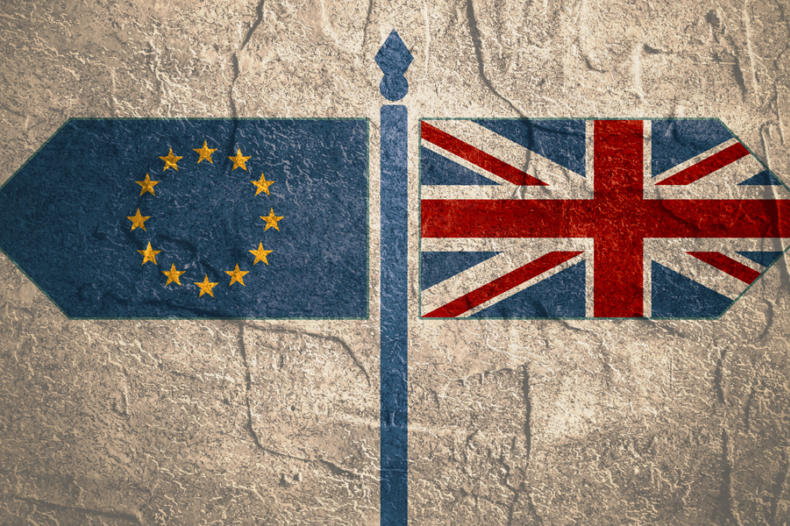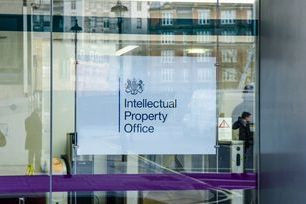Brexit – what we know now
We have put together all the essential information we have on registered EU trade mark and design rights post-Brexit, which you might find helpful. The guidance compares the current ‘deal’ with no deal.

Where we are
The EU Withdrawal Agreement was rejected by the UK Parliament on 15th January 2019. However, a modified version might be negotiated and agreed and, if so, it is not likely that the present terms in the agreement relating to trade marks and designs will change.
The UK Government continues to seek agreement from Parliament for a Withdrawal Agreement, but there are various political pressures in the UK: whether to delay Brexit, or to reverse the decision to leave the EU, or to amend the existing Withdrawal Agreement, or prevent an exit from the EU without any deal.
Parliament voted on 29th January 2019 to avoid a no deal exit, but this is not binding on the Government and therefore you should prepare for possible exit at 11pm, UK time, on 29th March 2019 (update: an extension has been granted until 31st October, click here to read).
We will be issuing further guidance on rights of representation for UK Chartered Trade Mark Attorneys once we have more clarity from the EUIPO and UK Government on the matter.
Summarised below are the main points that you should be aware of which may help with your planning and preparations.
EU registered trade marks and designs
What happens if there is no deal?
The UK IPO has informed us that it is ready to act to protect the rights of trade mark and design owners, even if there is no deal.
At 11pm on Brexit day, all existing registered EU Trade Marks and Registered Community Designs will be granted an equivalent or “comparable” trade mark or design registration in the UK.
This “cloning” will be at no cost, but the new UK national right will require its own separate renewal, alongside the renewal of the EU27’s right. The UKIPO is waiving the “late payment” charges for these new registrations for the first six months, because these “comparable rights”, being created only on Brexit day, could not be renewed early.
The cloned UK trade mark or cloned UK design registration number will have a prefix designation added to its EU number to show that it is a “cloned” registration.
Owners of EU registered rights will be notified that a new UK right has been granted by a notification and through guidance on the UK IPO website.
Any rights owner that may not want to receive a new comparable UK registered trade mark or design will be able to opt-out.
These same provisions will apply to international trade mark and design registrations protected in the EU filed with the World Intellectual Property Organisation. It should be noted that these too will clone into standalone national UK rights, and not that an IR designating the EU will henceforth designate both the EU and the UK.
What happens if there is a deal?
The above provisions will also apply if the current relevant terms of the Withdrawal Agreement are implemented. The major difference is that the Withdrawal Agreement provides for a transition period ending on 31st December 2020, at the earliest.
Therefore, we can expect that there will be an orderly division of registered EUTMs and RCDs and that they will all be “cloned” on exit day.
Use issues
Whether there is a deal or no deal
The UK government has confirmed that use in the remaining 27 EU countries within the five years before exit day, which would have supported an EUTM registration, will also support the validity of the comparable UK registration.
Therefore, a cloned UK registration which derives from a EUTM registration which has not been used for five years or more will immediately be vulnerable to non-use revocation at the UKIPO, just as it is at the EUIPO.
A cloned UK registration which derives from an EUTM which is being used extensively in e.g. France, Germany and Italy, will not yet be vulnerable to non-use revocation even if it has never been used in the UK.
However, if that use pattern continues, then in five years’ time the cloned UK registration will become vulnerable to non-use revocation, because the EU28 use will be too distant and the EU27 use will no longer be relevant.
Pending applications
Whether there is a deal or no deal
If UK protection is desired, then it will be necessary to refile EU Trade Mark and Registered Community Design applications which are pending at the date of exit with the UK IPO. This is also true for EU designations under the international registration system.
International trade mark and design registrations designating the EU which have not been granted protection in the EU will also need to be refiled with the UK IPO.
The positive news for applicants is that for a period of nine months from exit, the UK IPO will recognise all filing dates and claims to earlier priority and UK seniority recorded on the corresponding EU application.
The UK IPO has not agreed to notify applicants with pending EU applications that they will need to consider whether they should refile in the UK.
All existing registered EU Trade Marks and Registered Community Designs will continue to be valid in the remaining 27 EU countries, and UK applicants, like EU and third country applicants, will continue to be able to apply for protection in the EU through an EU Trade Mark or Registered Community Design as they do currently.
Unfortunately, in relation to the status of legal disputes involving EU Trade Marks or Registered Community Designs which are ongoing before the UK courts when the UK exits the EU, we have only been told that more information will be provided before the UK actually leaves the EU.
Exhaustion of rights
Whether there is a deal or no deal
It has been confirmed that intellectual property rights which were exhausted both in the EU and in the UK before the end of the transition period shall remain exhausted both in the EU and in the UK, whether there is a deal or no deal.
If there is no deal, the UK will continue to recognise exhaustion of rights in the UK and the remaining EU countries but no equivalent statement has yet been made by the EU.
Unregistered design rights
Whether there is a deal or no deal
The UK government has confirmed that all unregistered community designs which exist at the point that the UK leaves the EU will automatically continue to be protected and enforceable in the UK for the remaining period of protection of the right.
The government has also committed to introducing equivalent protection in the UK through new legislation.
Actions to consider
-
When should applications be filed in the UK at the same time as in the EU? If you cannot guarantee that registration of the trade mark or design will be completed by 31st October 2019 or by 31st December 2020, should you file identical applications?
-
Is use of a trade mark limited to just the remaining 27 EU countries or just the UK? Should expanded use be planned?
- Should UK trade mark registrations be abandoned at the time of renewal and seniority claimed? Or should the UK registration be renewed?
- Are there licences or security interests recorded against the EU registration which should or should not be recorded against the comparable UK registration?
- Review ongoing EU opposition and invalidation proceedings because, if they are based solely on a UK right, that right will probably not be a valid prior right after exit.
- Consider filing an EUTM alongside your UK application or registration in order to have an assertable right against future EUTM applications or registrations, since after Brexit, a UK right will no longer be relevant to an EUTM application.
- Diarise nine months from exit day to ensure all necessary applications are refiled in the UK, and notify clients of potential extra costs.
- Consider whether a comparable UK registration should be surrendered after exit because the existence of the registration could contravene an earlier agreement.
- Do you need to expedite potential or ongoing proceedings to ensure completion before exit day?
- Check on renewal dates of EU Trade Mark and design registrations – there could be additional UK renewals due immediately after exit day and it is not possible to renew the EU right early to escape this.
- Review if existing contracts are vulnerable to mis-interpretation. Should clauses relating to jurisdiction, governing law and territory be amended?
- Review distribution agreements in anticipation of changes to the exhaustion regime.
- Does ownership of .eu domain names need to be transferred?
This document will be updated as new information becomes available.
If you have any questions or comments - please drop us an email. We will be publishing an update with answers to members' questions shortly.
Further reading
UK IPO updates address for service guidance
Ahead of the upcoming changes to address for service rules for comparable trade marks and re-registered designs, the UK IPO has published updated guidance on the requirements.
UK government announces no action on exhaustion
The government needs more time to explore the UK’s future exhaustion of intellectual property (IP) regime meaning there will be no imminent change, it has announced.
Deadline looms for pending EU rights
Earlier UK filing dates for some 70,000 trade marks are still eligible to claimed with the deadline just six weeks away.
UK IPO's warning about priority filings
Just ten weeks remain until the filing deadline for UK priority applications based on rights that were pending at the EUIPO on 1st January 2021.





